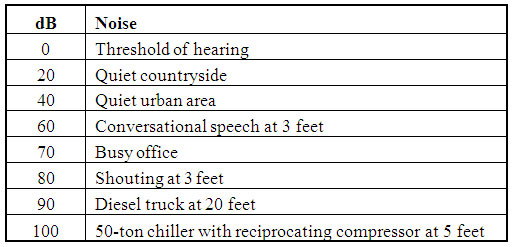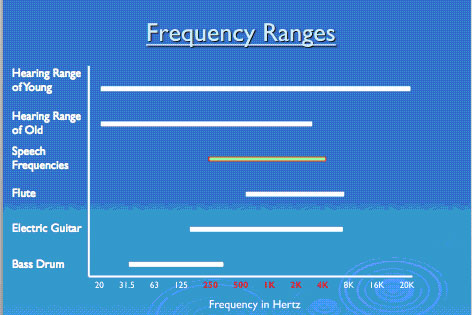Noise Control and Room Acoustics in Building Design
Spectrum band analysis.
The application of acoustical finish materials or the design of a floor/ceiling assembly will depend on the frequencies needing to be controlled.
 |
Decibel levels of different sounds. Provided by Kinetics Noise Control |
For purposes of analysis, sound is divided into frequency bands. A spectrum band analysis plots sound (decibels or dBs) against frequency (hertz or Hz).
A-weighting (dBA).
In the measurement of loudness, an A-weighting filter on the sound meter is commonly used to emphasize frequencies from 1000 to 8000 Hz where the human ear is most sensitive, while attenuating very high and very low frequencies to which the ear is less sensitive. The aim is to ensure that measured loudness corresponds with subjectively perceived loudness.
Frequency ranges
Frequency range in Hz depends on the source of the sound. The range of frequencies that young people (under age 25) are able to hear is 20 Hz to 20 kilohertz (one kHz equals 103 Hz). People’s ability to hear high frequencies decreases with age.
The application of acoustical finish materials or the design of a floor/ceiling assembly will depend on the frequencies needing to be controlled.
 |
Frequency range varies by source and is diminished with age Provided by Kinetics Noise Control |









